Both kitchen and bathroom spaces have one thing in common – the mix-up of various organic and inorganic chemicals. Despite the similarities, the usage of the space and your expectations from both can be quite different. Thus, your choice of both kitchen and bathroom tiles should be different too.
However, you would want to make both spaces look and feel as good as possible. This is where your choice of tiles for both spaces comes to be different. You need to use tiles which keep both places aesthetically appealing and functional at the same time.
KITCHEN TILES
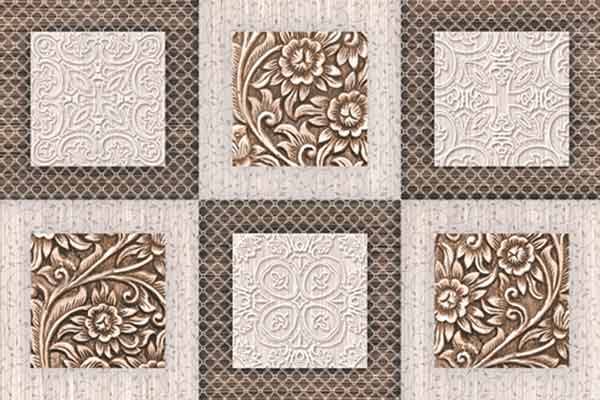
The kitchen is one of the areas that are most vulnerable to spills and stains. This implies that the tiles you choose should be durable, stain-resistant, and simple to maintain.
What should keep in mind before choosing kitchen tiles:
- Durable
- Stain-Resistant
- Simple to maintain
Glazed ceramic tiles and glazed vitrified tiles (GVT) offer the widest range of choices in design and texture with superb durability. Using glossy surface finish for wall tiles will also help you remove oil and food residue easily. Glass tiles are a great option because they require little to no upkeep if you intend to use tiles for the backsplash in your kitchen. Since they can resist high foot traffic and effectively hide stains, cork, vinyl, and stone tiles are also good for kitchen flooring.
Utilising larger tiles in the kitchen will appear nicer than using smaller tiles because they may fit there just fine. Because it unifies the other kitchen design elements, a straight pattern is the layout of preference. Other tile patterns, like herringbone or a windmill pattern, can be used to get this particular appearance.
You can choose a functional yet aesthetically beautiful tile variation for the walls of your kitchen. Consider it a decorative element that will give your kitchen new life. With stain resistance in mind, you can be creative with the styles and patterns used here.
The Kitchen tiling is made up of two parts: the wall and the floor.
Kitchen wall tiles
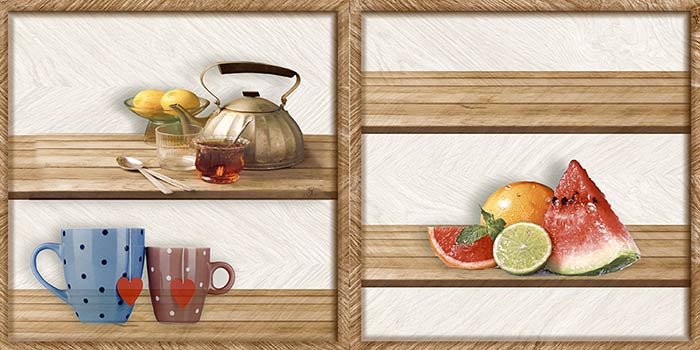
Wall tiles with a glossy finish are the simplest to keep. Matte and textured tiles can also be attractive if they are cleaned regularly. Glossy tiles can create a richer appearance in the kitchen, especially with natural light. Gloss or polished tiles can avoid stains more easily than matt finish tiles. So, using glossy tiles near the cooking area can be better for hygiene and cleanliness.
The balancing act would be to choose large-size tiles in a soft matt finish, sometimes known as "Satin matt," which provides a respectable look without too much brightness while still being easy to maintain.
Most Popular Kitchen Wall Tiles Collection
Kitchen floor tiles
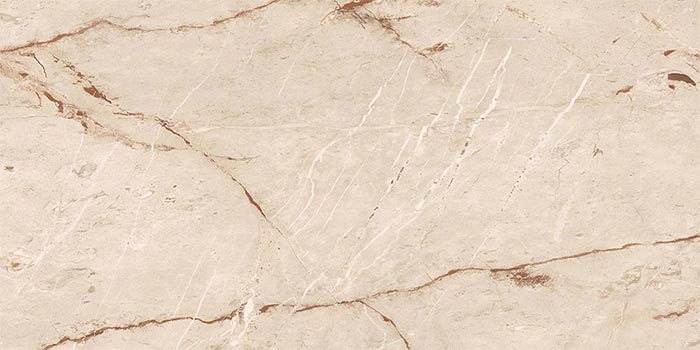
Extending the living room flooring into the kitchen is a popular technique in today's homes. Because most kitchens are open to the living area, it creates a continuous appearance. If the flooring being extended to the kitchen is shiny, caution should be exercised in the kitchen because spilling of water is not uncommon, and this could result in users slipping.
To prevent such mishaps, keep the floor dry. When a kitchen is separated, such as in a restaurant, the floor tiles must be:
- Durable
- Scratch
- Skid Resistant
Most Popular Kitchen Floor Tiles Collection
BATHROOM TILES
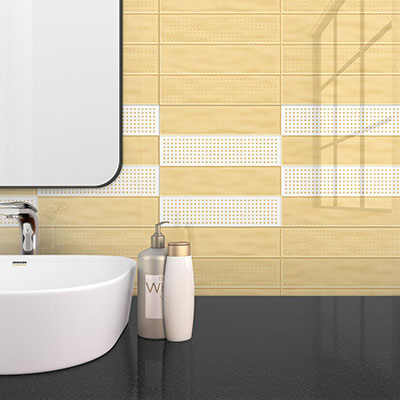
A tile variety that is both slip and water-resistant is what you should choose for your bathroom. Bathrooms are one of those spaces that are constantly subjected to dampness, stains, and strong water flow,
Bathroom Space are generally victim of following things:
- Dampness
- Stains
- Continuous Water flow
Therefore it's important to pick a tile type that can handle these things very well. Porcelain, vitrified and Ceramic tiles are a few types of bathroom tiles. These choices are ideal for use as bathroom tiles since they have the characteristics required for bathroom flooring and walls.
The most crucial factor to take into account when selecting bathroom tiles is maintaining foot traction because utilising the wrong ones can create slip hazards. Since bathrooms are often small, you can get away with utilising smaller tiles that are arranged in a diagonal pattern to give the space a feeling of space. As the remaining tiles will need to be cut to fit around the fittings, using large tiles may result in an uneven tile floor.
For an ultra-clean appearance, it is better to stay with simple, plain tile patterns when it comes to aesthetics. Reserving the attractive flooring for other uses would prevent colourful design tiles from looking out of place in a bathroom. Light colours like white, cream and light grey are wonderful options for creating a calming and unwinding atmosphere in a tiny place like a bathroom.
Bathroom tiling is made up of two parts: the wall and the floor.
Bathroom wall tiles
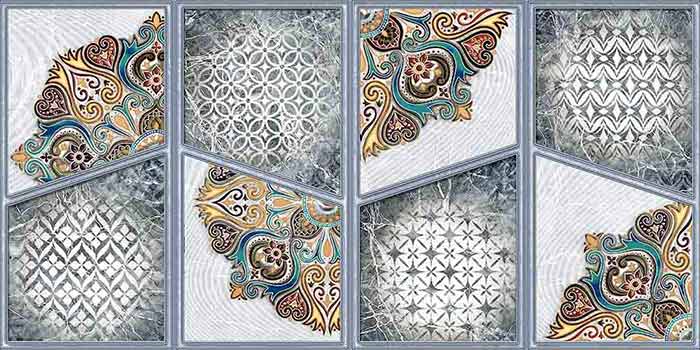
You have the option of selecting from a wide range of surface finishes and styles. Because the overall wall size of the bathroom is typically greater than the floor area, we must address this thoughtfully. Listed below are some bathroom tiling suggestions:
- Choose larger tiles to limit the number of joints and simplify maintenance and cleaning.
- While a glossy or polished surface is thought to be simpler to clean, a soft matt surface will reduce reflections in the bathroom.
- Lighter colour glossy tiles can help utilise even the nominal light in the space. So, it makes the space safer for .
- Make use of tiles that have the "Germ-Free" option. These tiles contain an antimicrobial characteristic that inhibits the growth of bacteria and fungus that cause infection, foul odours, and stains.
H&R Johnson was the first to market with their patented technology, which includes anti-microbial wall and floor tiles.
Bathroom floor tiles

The presence of water and soapy liquids on the bathroom floor increases the risk of slipping and sliding. A thin film of water or soapy water on the surface causes it to happen. When the tile surface is exceptionally smooth and shiny, the risk of staining increases dramatically, hence skid-resistant or anti-slip tiles are recommended. If there are elderly people in the house, floor tiles with a harder matt and textured surface work well.
Factors to Consider While Choosing Tiles
When deciding between kitchen and bathroom tiles, there are a few things to take into account. You might want to take these things into account before you go to the hardware shop to make sure the tiles you buy are appropriate for the applications you intend to use them for. What you should remember is as follows:
- Surface Durability or Scratch Resistance:
- Slip Resistance:
- Size of Tiles:
Compared to a restroom, a busy kitchen sees more foot activity. This is the reason why the floor tiles in your kitchen should have a greater surface durability rating than the floor tiles in your bathroom.
Bathroom tiles should always put safety first. For that, the flooring in your bathroom should be made of a set of tiles with an anti-slip rating. The slip rating is often given as R-value ranges between 9 to 13. It represents the surface resistance of the tile with 13 representing the highest slip resistance.
The ideal tile size for your kitchen or bath space depends on two factors - available area and slope for water drainage. Smaller tiles (30x30, 60x60cm) make more sense for smaller kitchens and bathroom floors because they can offer more efficient drainage and need minimum resizing for the area. Larger bathrooms and kitchens can use larger tiles (60x60, 80x80, 60x120cm). However, ensure that the water drainage efficiency has been maintained.
Frequently Asked Questions
The requirements for each venue differ in terms of aesthetics in addition to practicality. Additionally different from bathroom tile designs are kitchen tile designs. There are some tile designs, however, that can be utilised in both the kitchen and the bathroom. Modern tiles, on the other hand, are created with consideration for the aesthetic value of the specific area. The tiles used in the kitchen and bathroom are therefore different.
The price of tiles depends on the type, area and glaze quality. Glazed ceramic tiles, porcelain and polished vitrified tiles are the best for use in the kitchen. The cost also varies according to your region. It is best to check at your nearest dealer for more accurate prices for your desired tiles. To receive an accurate price quote, please contact HRJ Customer Care.
The price for tiles will vary as per the type, quality, thickness and glaze or polish of the tile. Glazed vitrified tiles and porcelain tiles are best for use in bathrooms due to their near zero water absorption. The cost varies according to the tile's calibre and location. For a precise price quote, you can contact the nearest H&R Tiles dealer. Get in touch with HRJ Customer Care and locate your dealer here.